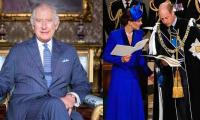Against this backdrop, the military campaign was making no strategic headway as both the senior civilian and military leaders misled the public about the war effort. The greater problem emerged when tactical and operational results were allowed to supplant strategic success in Afghanistan.
The data that special operations units in Afghanistan collected were helpful for painting the picture of what those units did (often referred to as “measures of performance), but did little to inform either the commanders or external actors on the strategic effects of their actions.
The Joint Special Operations Command (JSOC) portrayed its 1,000 air assault operations in 2006, the killing or captured 600 Taliban leaders and 2,000 fighters in 2010, and its record of successfully training nearly 11,000 Afghan local police in 2012, all of which had little bearing on strategic success in Afghanistan, though it brought grin to the top political leaders, who little understood the technicalities of an irregular war, reinforcing the military’s approach with Congress’ tacit approval and making it extremely difficult to change strategy or end the war entirely.
Cole Livieratos, a US Army strategist and veteran of the war in Afghanistan, while reviewing the situation, analyses, “without obvious strategic metrics, neither civilians nor military leaders had a clear understanding of strategic progress.” Second, “with the military offering positive assessments only a few individuals at the Capitol had the requisite knowledge to challenge which reinforced the military’s existing approach.”
The House Armed Services Committee “would just go and watch the classified briefings of Special Operations Command’s direct kill and arrest action raid videos and call it oversight, which was easier to understand, quantify and achieve immediate results.
While only about ten percent of members, having the requisite knowledge to challenge would ask tough or relevant questions” to the command, as a consequence both the senior civilian and military leaders misled the public about the war effort, as they also profited from the war.
At least 47 members of Congress and their spouses held between $2 million and $6.7 million worth of stocks in top 100 defense contractors, a Sludge analysis of financial disclosures found. They would approve funding for the contracts making up the bulk of the companies’ revenues. Since US military actions in Afghanistan were authorized in September 2001, the stocks of the top five defense companies, Lockheed Martin, Raytheon, Boeing, Northrop Grumman, and General Dynamics, rose by an average of nearly 900%, strongly outperforming the S&P 500 index. The maximum value of the investments held by federal lawmakers in the ‘Big Five’ — Lockheed Martin, Raytheon, Boeing, Northrop Grumman, and General Dynamics — is over $2.6 million, making up nearly 39% of the total stock holdings identified. From compiling General Services Administration data, defense analyst Stephen Semler found that the Big Five have received over $2 trillion since the start of the Afghanistan invasion, including $119 billion more in US contracts awarded in 2020 than they did in 2001. All this involvement made rewarding US military easier but the strategy remained unchanged and fruitless as the war continued. It must be pretty damning embarassment for any civilised society that its political leaders who authorised the war were the same ones who profited from it.
The Vietnam disaster remains deeply etched in the US psyche and all of the US civ-military policymakers saw Taliban and more particularly Haqqani group through their experience of Viet Cong sanctuary, an argument of little practical reality, but that twisted and contorted the US-Pakistan relationship to the latter’s detriment.
The US and ISAF Commander, Gen McChrystal understood the problem and told Shuja Nawaz of an encounter with Afghan president Karzai who “denied in totality, the insurgency in his country insisting it was external terrorism.” When McChrystal advocated Karzai to go after the insurgency, he flatly refused to recognize domestic terrorism, saying “we don’t have an insurgency. I (Chrystal) said I think you do. He goes on to say we have got external terrorism. I said no you don’t. You have got a little of that. But Karzai said if we say it is an insurgency, the West will leave us. We will call it an internal Afghan problem as we need the West to stay.”
The US and Afghans never wholeheartedly controlled the Pak-Afghan borderland ignoring the need of Pak-Afghan operations to stem the infiltration. The US also failed to adequately equip the Pakistanis the equipment to provide their troops protection and mobility to conduct operations in difficult terrain against a highly mobile enemy. Eventually, the Pakistanis, Afghans and the US failed to connect or coordinate their actions, Nawaz said. Former Afghan president Hamid Karzai used the ruse of Durand Line to object and even smash some of the defined crossing points installed by Pakistan with biometrics to monitor movement. By 2018, Pakistan had managed to build nearly 900 posts but the reluctant Afghanistan had 250 posts only. Pakistan was continually suffering from the free movement of terrorists from Afghanistan and was losing civilians, troops and even general officers in the fight against Al-Qaeda, none of which ever happened with the US. Islamabad wanted the US to conduct coordinated parallel actions on both sides of Pak-Afghan border to prevent the escape of militants from one side to the other. But apart from the former Bajaur and Mohmand agencies, that could never materialize, calling the US sincerity into question. Same was true for the drone attacks, which were seldom used to target anti Pakistan terrorists. While the terrorists continued to flow into Pakistan from the eastern Afghanistan, to COAS Gen Ashfaq Parvez Kayani’s utter dismay, the US shifted its troops to Helmand and Kandahar in the south against repeated ‘pledges and commitments’. The US behavior was cavalier to Pakistan’s concerns. Gen Kayani recalled “losing his cool” with ISAF Commander Gen John Allen at one point when in response to infiltrating terrorists, he deployed under training Afghan forces against the promise of regular US troops there. Thus Gen Kayani did not have the US anvil to Pakistani hammer, writes Shuja Nawaz, ...so the US betrayal mantra against Islamabad is not such a straight forward matter, there is another culprit too. While the human casualties in Pakistan were piling high with almost every day attacks in the cities and in operations with troops, Washington in its hubris was reluctant to even countenance Islamabad’s sensitivities of an impending expanding civil war by pressing Pakistan for launching bigger operation. The country suffered loss of 83,000 people, innocent civilians and troops and generals, besides losing USD 126 bn in economy. Being a transatlantic nation, the US in entire 20 years of military engagement in Afghanisan didn’t lose even fragment of it and had little realization of the massive regional destabilization it would leave behind. Already being a US ally, Pakistanis in the northwest had turned against the state and the extremism was high, none of which was part of the country’s fabric before the US and the USSR locked horns in Afghanistan in the ‘80s when the terrorists of entire Middle East and Africa flooded the country never to return.
Islamabad knew that the Pakistan Taliban had strong links with the Punjabi Taliban and other Jehadi groups, and feared any ‘premature’ crackdown would unleash the fury in Punjab and other parts of the country, portraying another discord with US and its oft repeated push for ‘do more’ to the country’s extreme detriment just at the cost of US short term goals.
Admiral Mike Mullen and some other Americans were hell bent to make the Pakistan Army chief budge, take the war into Punjab against the terrorists, under their pressure “even if it went against his country’s core interests.” Gen Kayani’s refusal earned him their ire, while they constantly blindsighted their reciprocal military actions in Afghanistan that could have turned the tide of war. Needlessly, the White House followed the blundering, floundering approach of the Pentagon.
Throughout the 20 years the US commanders remained baited to Afghan President Hamid Karzai and his NSA Saleh’s advice leading to strategic failures planned and strategized by the Pentagon, CIA and the White House.
Most in the US were fed on the narrative of the large lethal network of the Haqqani group. Lethal they are, but big they are not, US military veterans, senior generals and ISAF commanders agree. The Haqqanis were a relatively small part of the internal Afghan insurgency or perhaps just the tip of the iceberg. Pakistan had all along argued that if the US led coalition was serious about the group, it could intercept them and other infiltrators any time across the border. “Why they didn’t do it.” The US and ISAF commander McChrystal told Shuja Nawaz, the Haqqani attacks simply emanated from North Waziristan alone, while all over Afghanistan it was a large Taliban network effort. This admission shows a different reality behind the brouhahaha. “Haqqani group was a lethal tactical reality not a military juggernaut.” This was even conceded by senior White House officials, that “only some ten per cent of the attacks inside Afghanistan were conducted by Haqqani group while 90 per cent were by other groups.” This was literally made into a mountain out of the molehill which to this day remains part of the US noxious narrative against Pakistan. Earlier part of the story was carried in Thursday’s edition of The News. This is the final and concluding part.
PTI maintain leading position in NA elections, with narrow lead of one percentage point over PMLN
Nationalists say province's resources, land, and water were being sold under guise of development







